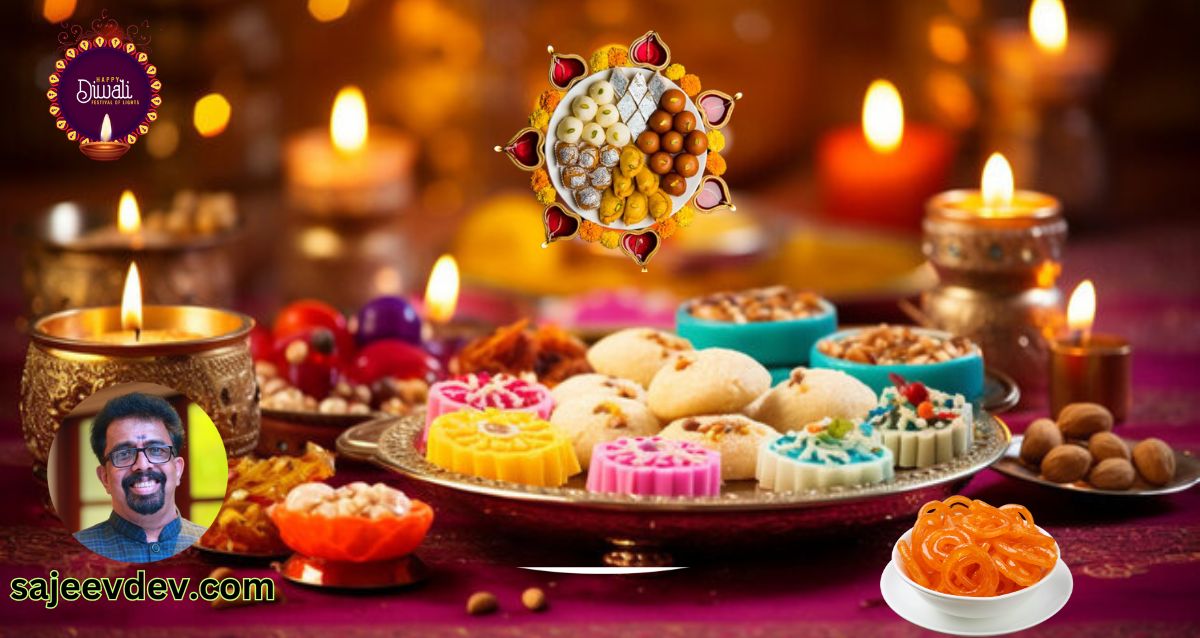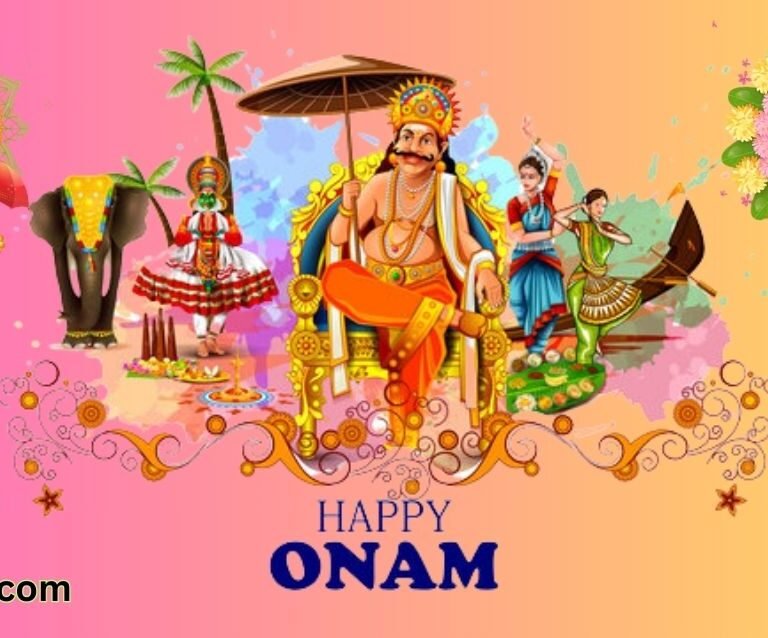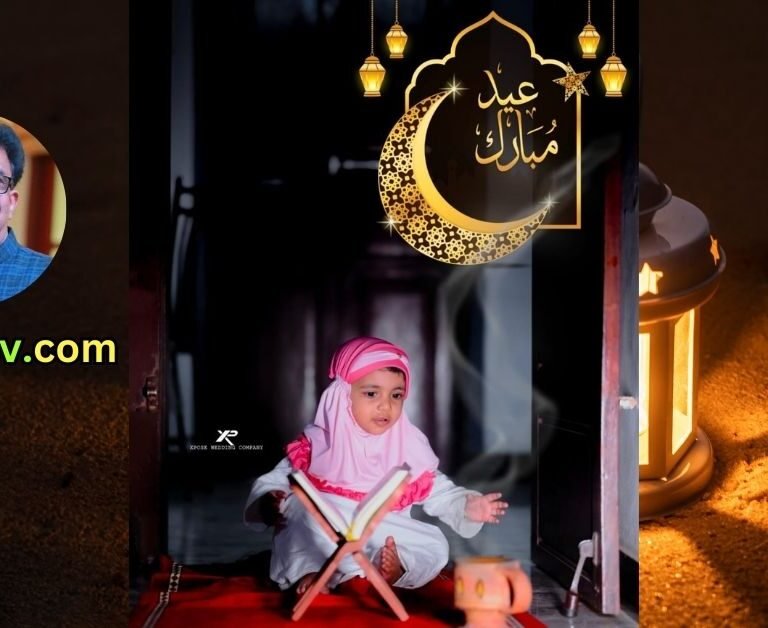Diwali and Its Sweet Traditions
Diwali, widely recognized as the Festival of Lights, holds immense significance in Indian culture. Celebrated by millions around the globe, it represents the triumph of light over darkness and good over evil. Rooted deeply in ancient traditions, this vibrant festival typically spans five days, each adorned with rituals and cultural ceremonies that strengthen familial bonds and community ties. Homes and public spaces are illuminated with oil lamps, known as diyas, symbolizing the victory of enlightenment and knowledge.
Central to the Diwali celebrations are the delectable sweets that play a pivotal role throughout the festivities. These traditional Indian sweets, or mithai, are not merely treats; they embody joyous sentiments and the spirit of giving. As families come together to celebrate, sharing these confections fosters a sense of unity, spreading joy and prosperity among loved ones. From intricately prepared desserts to simple delights, Indian sweets have a special place in the hearts of many, proving essential to the festive atmosphere during Diwali.
Moreover, Diwali sweets hold a profound spiritual significance. They often serve as offerings during pujas (prayer ceremonies) to deities, invoking blessings and goodwill for the coming year. The act of indulging in these sweet delicacies represents more than culinary enjoyment; it signifies the richness of life’s experiences and the importance of gratitude. During this time of reflection and celebration, the act of sharing sweets encapsulates the essence of Diwali: promoting harmony, happiness, and a shared sense of belonging amidst the chaos of life. The culinary splendor of Diwali thus mirrors the overarching theme of the festival, blending spirituality with indulgence in a harmonious celebration of life.
The Importance of Sweets in Diwali Celebrations
Diwali, known as the Festival of Lights, is one of the most significant celebrations in Indian culture, marked by a plethora of traditions that underscore its religious and social importance. Central to these traditions is the role of sweets, which play a vital part in the festivities. Sweets are not just delicious treats; they embody joy, prosperity, and the spirit of giving, making them integral to Diwali celebrations.
One of the most cherished traditions during Diwali is the exchange of sweets among family and friends. This practice symbolizes the sharing of love and goodwill, reinforcing familial bonds and friendships. Families often prepare an array of sweets at home, showcasing their culinary skills and creativity, while also purchasing from local sweet shops, thus supporting small businesses. The act of gifting sweets represents the essence of generosity and community, fostering connections within neighborhoods.
Moreover, sweets hold a sacred significance during prayers and rituals. During the puja ceremonies, a variety of sweets are offered to deities as a gesture of reverence and gratitude. This offering signifies not only respect but also a prayer for abundance and happiness in the coming year. These offerings are a manifestation of faith, with each sweet serving to fortify spiritual connections during this auspicious time.
Throughout India, the diversity in sweet-making practices reflects the rich cultural tapestry of the nation. Each region boasts its unique specialties, such as ‘Gulab Jamun’ from North India or ‘Mysore Pak’ from the South. These regional variations highlight local ingredients, traditions, and historical influences, making the experience of Diwali sweets a delightful journey across the landscape of India’s diverse culinary heritage.
In conclusion, sweets are a cornerstone of Diwali celebrations, symbolizing cultural values, community bonds, and spiritual offerings. Their profound significance enriches the festival, reminding us of the joy and unity that Diwali embodies.
Gulab Jamun: The Classic Delight
Gulab Jamun is a quintessential Indian dessert that has been cherished for centuries, particularly during festive occasions such as Diwali. Its origins can be traced back to the medieval period, believed to have been inspired by similar Middle Eastern confections. The sweet is crafted using khoya, made from evaporated milk, which lends it a rich and creamy texture. These dough balls are then delicately fried until golden brown and subsequently immersed in a fragrant sugar syrup infused with rose water. This preparation results in a dish that perfectly balances sweetness with floral notes, making it a beloved treat across India and beyond.
The method of preparing Gulab Jamun requires meticulous attention to detail. Firstly, the khoya is kneaded into a dough, often combined with a small amount of all-purpose flour and baking powder to achieve the ideal consistency. Once shaped into small balls, they are deep-fried in ghee or oil until they attain a uniform golden color. The final step involves soaking these warm balls in a prepared sugar syrup, typically flavored with cardamom and rose essence. This phase is crucial, as it allows the dough balls to absorb the syrup, resulting in a soft and luscious texture that melts in the mouth.
Gulab Jamun comes in various regional variations, each providing a unique twist on the classic recipe. Some might add exotic ingredients like saffron or nuts, while others may even experiment with alternative flours or sweeteners. Regardless of these variations, Gulab Jamun remains a staple at Diwali celebrations, where it epitomizes the joy of sharing sweets with family and friends. Its rich heritage and delectable flavor solidify its status as a classic delight in Indian cuisine, making it a must-try sweet during the festival of lights.
Jalebi: The Crispy Sweet
Jalebi is a beloved Indian sweet that stands out with its vibrant orange hue and unique crispy texture. This intricately coiled dessert is a staple during festivals, particularly during Diwali, when it symbolizes joy and celebration. The preparation of Jalebi involves a meticulous process, beginning with the fermentation of a batter made from refined flour (maida) and yogurt. This fermentation step is critical as it imparts a slight tanginess to the batter, enhancing the flavor of the final product.
Once the batter has sufficiently fermented, it is poured into a piping bag, allowing for precise control when shaping the Jalebi. The batter is then skillfully drizzled in circular motions into hot oil, which causes it to sizzle and fry into crisp spirals. Achieving the right balance of heat is essential, as too low a temperature can result in oily Jalebis, while excessively high heat can cause them to burn. The fried Jalebis are then soaked in a warm sugar syrup flavored with cardamom or saffron, adding both sweetness and aroma to the dish.
The cultural significance of Jalebi during Diwali cannot be understated. This delightful sweet is often associated with festivity and sharing, symbolizing the joy that accompanies family gatherings and celebrations. It is common for people to delight in Jalebi while visiting friends and loved ones, making it a customary part of the Diwali experience. Furthermore, Jalebi is not just confined to festive occasions; it is also enjoyed as a popular street food and can be found in various regions of India, each with its nuances in preparation. Thus, Jalebi encapsulates not only a delightful taste experience but also a sense of community and tradition during the festive season.
Barfi: A Diverse Delicacy
Barfi, often referred to as Indian fudge, is a beloved sweet that epitomizes the rich culinary heritage of India. This confectionery item is characterized by its smooth texture and rich taste, making it a favorite during festivals and special occasions, including Diwali. The term “barfi” itself is generic, encompassing a wide variety of flavors and ingredients, which leads to its diverse interpretations across different regions of India.
Traditionally, barfi is made using milk, sugar, and a range of flavorings. Common ingredients include cashews, almonds, and coconut, which contribute unique textures and tastes to the sweet. For instance, Kaju Barfi, made primarily from cashew nuts, is a popular variant known for its rich, creamy consistency and subtle sweetness. Similarly, Coconut Barfi, infused with grated coconut, presents a chewy texture and tropical flavor profile that appeals to many.
The preparation of barfi generally involves condensing milk to a thickened consistency and blending it with sugar and the selected flavoring ingredients. The mixture is then spread evenly in a tray, allowed to cool, and cut into various shapes, typically squares or diamonds. The evolution of barfi is notable, as it has adapted through time, resulting in regional specialties that showcase local ingredients and preferences. For example, variations such as Pista Barfi emphasize pistachios, while others might incorporate exotic flavors like saffron or cardamom, enhancing the sweet’s aromatic appeal.
In its essence, barfi represents both tradition and innovation, as culinary artists continuously experiment with flavors, making it a versatile dessert that can cater to different palates. Its role in festivities, especially during Diwali, underscores its significance in Indian culture, marking celebrations with its delightful sweetness.
Ladoo: A Symbol of Festivity
Ladoo, a cherished sweet in Indian cuisine, holds a significant place during festive celebrations, particularly during Diwali. These round confections come in various forms, commonly made from ingredients such as gram flour (besan), semolina, and coconut. Each type of ladoo offers a unique flavor and texture, contributing to their widespread popularity among sweet enthusiasts. From the rich and nutty Besan Ladoo to the delicate and flavorful Motichoor Ladoo, the diversity is remarkable. Preparing ladoos involves roasting the primary ingredient until fragrant, combining it with sugar, and forming round balls that are often garnished with nuts or other embellishments.
The significance of ladoo during Diwali cannot be overstated. As families come together to celebrate the festival of lights, ladoos often serve as a symbol of prosperity and abundance. In many households, preparing ladoos is a cherished tradition passed down through generations, making it an integral part of the festive experience. Offering ladoos to guests is a customary way of sharing joy and blessings, embodying the spirit of love and togetherness inherent in the celebration.
Additionally, ladoos are not limited to just one recipe or flavor. Other variations, such as Coconut Ladoo or Rava (Semolina) Ladoo, showcase regional preferences and creativity in Indian sweet-making. Each variety brings its own story, celebrating the cultural diversity of the country. During Diwali, ladoos also serve as an important offering during prayers, symbolizing gratitude, and reverence to deities.
In the myriad of sweets that define Indian festivals, ladoos undoubtedly stand out, not only for their variety and taste but also for their rich cultural significance. Grasping the essence of ladoos allows one to appreciate how deeply intertwined they are with the celebration of Diwali, enhancing the sweetness of the occasion.
Kaju Katli: The Nutty Version
Kaju Katli is a luxurious Indian sweet cherished for its rich texture and delightful taste. As the name suggests, this delightful confection is primarily made from cashew nuts, or ‘kaju.’ The process of making Kaju Katli begins with high-quality cashews, which are carefully selected and soaked in water to enhance their softness. Once softened, the cashews are drained and ground into a fine paste, ensuring that they retain the nutty flavor that defines this sweet. This step is crucial as it lays the foundation for the overall richness of the dessert.
After the cashew paste is prepared, it is blended with sugar in a heavy-bottomed pan and cooked over low heat. The mixture requires constant stirring to prevent it from burning and to achieve the perfect consistency. As the sugar dissolves, the cashew paste thickens, and the mixture transforms into a dough-like form. This delicate balance of cooking is paramount; overcooking the mixture may lead to a hard consistency, while undercooking might result in a sticky texture that is difficult to shape.
Once the desired texture is attained, the mixture is removed from heat and allowed to cool slightly before being rolled out onto a greased surface. The cooled dough is then flattened using a rolling pin, and the sweet is cut into traditional diamond-shaped pieces. The presentation of Kaju Katli, often adorned with a thin layer of edible silver leaf, adds to its appeal during festive occasions, including Diwali.
With its nutty taste and smooth texture, Kaju Katli has grown in popularity not just as an everyday sweet but as a special celebration treat. Its indulgent nature makes it a preferred choice for gifting and sharing during major festivals, making every moment more joyous and memorable.
6. Peda: The Soft and Creamy Treat
Peda is a beloved Indian sweet that holds a prominent place in the culinary tradition, particularly during festive occasions such as Diwali. This delightful confection is characterized by its soft and creamy texture, making it a favorite among both young and old. Traditionally made from condensed milk or khoya, which is reduced milk, Peda is often flavored with cardamom, saffron, or other aromatic spices, providing a rich taste that is both soothing and indulgent.
While the terms ‘Pedha’ and ‘Peda’ are often used interchangeably, it is important to note that ‘Pedha’ typically refers to the regional variations of this sweet, particularly in North India. Each variant brings a unique twist, with flavors and textures that cater to local palates. Variants such as ‘Dharwad Peda’ from Karnataka, known for its distinctive flavor and texture, showcase the diversity of this treat across regions. This diversity is a testament to the versatility of Peda, which can be customized with additional ingredients like nuts or dried fruits, enhancing both its taste and nutritional profile.
The preparation of Peda involves a traditional method where milk is simmered until it thickens, resulting in a rich base that is then sweetened and flavored. The mixture is rolled into small, round shapes, often adorned with additional ingredients or garnishes. This meticulous process not only highlights the craftsmanship involved in creating Peda but also reflects its spiritual significance during Diwali. In many households, Peda is offered to deities as part of the festive rituals, symbolizing the sharing of joy and prosperity. The act of gifting Peda during Diwali further strengthens social bonds, making it an essential treat of the celebration.
Soan Papdi: The Flaky Wonder
Soan Papdi, often referred to as the “flaky wonder,” is a traditional Indian sweet that has captivated the taste buds of many across the country, especially during festive seasons like Diwali. This unique confectionery is primarily composed of gram flour (besan) and sugar, making it a delight for those with a penchant for both sweetness and texture. What sets Soan Papdi apart is its airy and flaky structure, which is achieved through a meticulous and time-honored process.
The preparation of Soan Papdi is an art form in itself. The dough is created by mixing gram flour with sugar and water, and then it is cooked over low heat. As the mixture thickens, it is pulled and stretched to create fine layers, which is what gives Soan Papdi its signature flaky texture. Each strand is carefully pulled to ensure that the layers remain distinct, which can take considerable skill and patience. The outcome is a sweet that has a soft, melt-in-the-mouth quality, making it a favorite among both children and adults alike.
During Diwali, the festival of lights, Soan Papdi holds a special place on the dessert table. Its light and airy nature makes it a popular choice for gifting and sharing among friends and family. Given its widespread availability across Indian sweet shops, it has become synonymous with the celebrations. Many households also indulge in making Soan Papdi at home, as the process can be a wonderful bonding experience during the festivities. Its distinctive flavor profile, often enhanced with cardamom or nuts, further solidifies Soan Papdi’s status as a cherished treat during one of India’s most significant holidays.
Rasgulla and its Variants: The Spongy Delight
Rasgulla, a quintessential dessert hailing from the Indian state of West Bengal, epitomizes the rich culinary traditions of the region. This delightful treat is primarily made from chhena, a form of Indian cottage cheese, which is carefully processed to create small, spongy balls. The technique of preparing rasgulla begins with curdling milk using lemon juice or vinegar, leading to the formation of chhena. Once the whey is drained, the chhena is kneaded into a smooth dough, forming soft balls that are then boiled in a light sugar syrup. The result is a delicate dessert that is both syrupy and spongy, offering a unique texture that is loved by many.
What contributes to the popularity of rasgulla during the Diwali festival is its versatility and the sheer joy it brings to celebrations. The sweetness of this dessert is accentuated by the surrounding syrup, making it the perfect indulgence after a festive meal. Rasgulla not only symbolizes joy and festivity but also serves as a reminder of the importance of sharing sweets with loved ones during this auspicious occasion.
Over the years, various regional adaptations of rasgulla have emerged, each adding its own flair to this beloved sweet. In Odisha, for instance, the preparation includes a similar style but is often known as “Rasgulla” or “Rasagola,” and is distinctive for its slightly denser texture. Additionally, variations such as flavored rasgullas infused with saffron, rose water, or cardamom have gained popularity, further elevating the experience of indulging in this delightful dessert. These adaptations reflect the diverse culinary heritage of India and showcase how a simple ingredient can lead to a multitude of interpretations.
Celebrating Diwali with Sweets
Diwali, the festival of lights, is a time when joy, love, and togetherness are celebrated. One of the most cherished aspects of this festival is the abundance of sweets that adorn every household. The various Indian sweets, from the rich gulab jamun to the delectable barfi, not only satisfy the palate but also symbolize the warmth of the festive spirit. Each sweet carries with it a story, a traditional recipe passed down through generations, adding depth to the celebrations.
Indulging in the sweetness of Diwali goes beyond merely enjoying these confections. It involves embracing the cultural significance they hold in strengthening relationships among family and friends. Preparing and sharing sweets has become a cherished tradition, creating connections and reinforcing bonds within families and communities. This act of generosity and kindness is crucial during the festival, as sweets are often offered to neighbors, friends, and relatives, spreading joy to everyone involved.
Moreover, each sweet has its unique significance, often dedicated to various deities or interwoven into local customs. For example, the preparation of besan laddoo is common in many households, symbolizing prosperity and good fortune. As individuals partake in the creation of these delightful treats, they become part of a larger narrative that honors their cultural heritage.
In conclusion, the role of sweets in Diwali celebrations is paramount in fostering joy and unity among people. As you engage in the time-honored practice of making and sharing sweets, take a moment to appreciate the stories and traditions that inform these culinary delights. Let the sweetness of Diwali resonate not only through your taste buds but also within your hearts, bringing happiness to all who celebrate this joyous festival.









